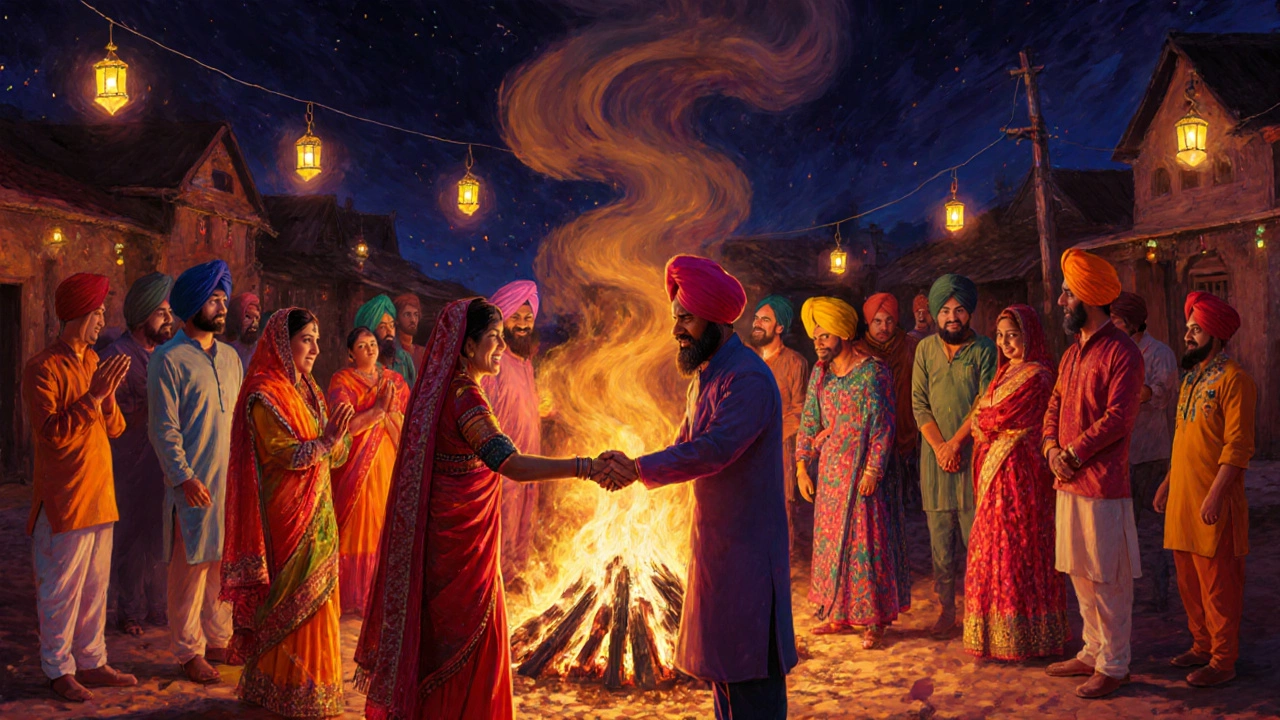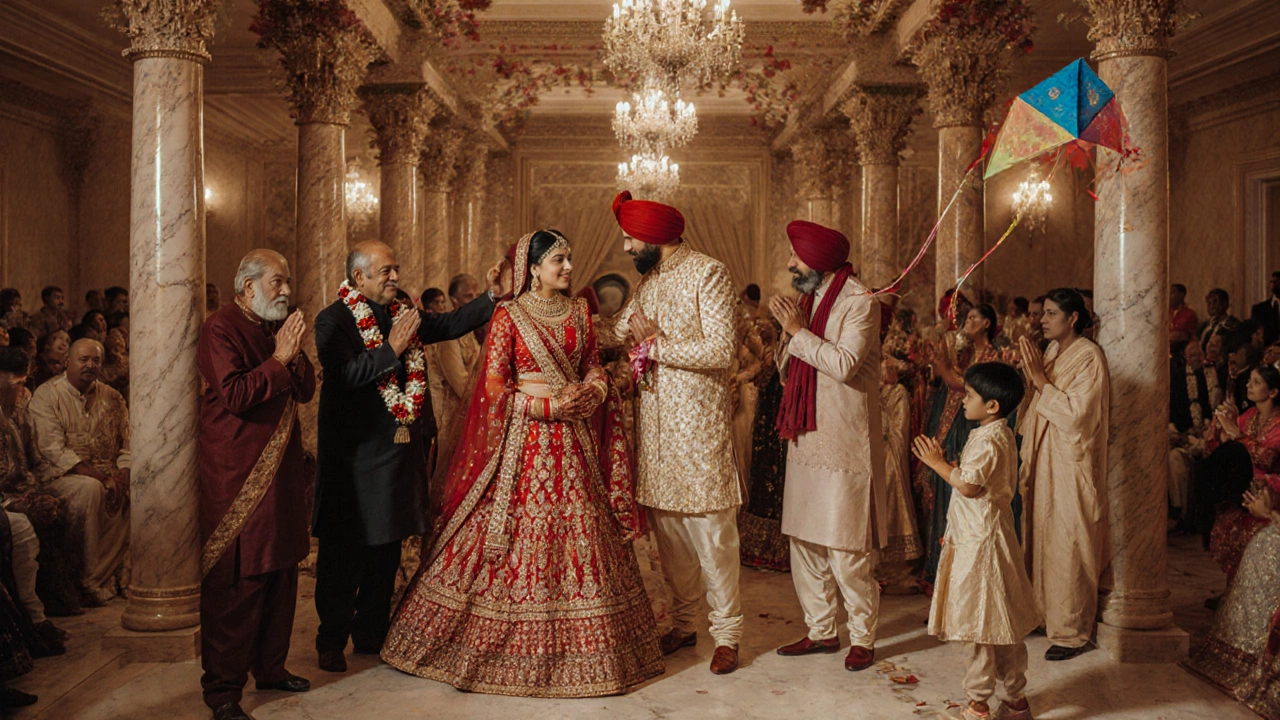Punjabi Greeting Traditions: How Do Punjabis Wish?
 Sep, 29 2025
Sep, 29 2025
Punjabi Greeting Selector
Select an occasion or context:
Ever wondered how a Punjabi family greets you on a festive day or a simple hello? Punjabi greetings are warm, rhythmic expressions that blend respect, joy and a dash of poetry. From bustling streets of Amritsar to cozy Melbourne homes, these wishes carry centuries of tradition and a splash of modern flair. Let’s walk through the most common ways Punjabis wish, when to use them, and the little etiquette tricks that keep the conversation smooth.
Core Elements of Punjabi Greeting Culture
Punjabi greetings are rooted in three pillars: language, religion, and community spirit. The Punjabi language is a melodic Indo-Aryan tongue spoken by over 100 million people across India and Pakistan provides the lyrical base. Sikhism, the dominant faith in Punjab, injects slogans like “SatSriAkal” that carry spiritual weight. Finally, family and friends form the social backdrop, turning a simple "hello" into an event.
Everyday Punjabi Hello: The Basics
- Sat Sri Akal literally means “God is the eternal truth” and is used by Sikhs as a respectful greeting. It works for both strangers and close acquaintances.
- Jee Aayan Nu translates to “Welcome, dear one” and is a warm invitation often heard when someone steps into a home.
- Namaste is more pan‑Indian, but many Punjabis use it in formal settings or with non‑Punjabi guests.
- Rab Rakha means “May God keep you safe” and is a tender farewell rather than a hello.
Notice the subtle shift: "SatSriAkal" is a greeting, while "RabRakha" is a parting wish. Mixing them up can feel off‑beat.
Festival‑Specific Wishes
Punjabi festivals each come with a signature wish. Knowing the right phrase instantly earns you extra respect at any gathering.
| Festival | Typical Greeting | Literal Meaning | When to Use |
|---|---|---|---|
| Lohri a winter harvest celebration | Happy Lohri! | Joyful winter festivities | Morning of Jan13 and throughout the day |
| Baisakhi the spring harvest and Sikh New Year | Happy Baisakhi! | Prosperous new year | April13‑14, especially at Gurdwara services |
| Diwali the festival of lights celebrated across India | Shubh Deepavali! | Auspicious lights | Evening of the main Diwali day |
| Eid the Muslim celebration after Ramadan | Eid Mubarak! | Blessed celebration | Morning of Eid al‑Fitr or Eid al‑Adha |
Even though Eid is not a Punjabi‑specific holiday, many Punjabi Muslims share the same greeting, showing the region’s cultural blend.

Wishes for Weddings and Family Milestones
Marriage is a massive event in Punjabi life. The words you choose can set the tone for the whole celebration.
- Mubarak a simple “congratulations” used for any happy occasion.
- Shadi di lakh lakh vadhaiyan means “a hundred thousand congratulations on the wedding” and is the go‑to phrase for newlyweds.
- Dhan Di Lakh Lakh Vadhaiyan specifically celebrates the bride’s new household.
- For a newborn: ‘Bachhe diyan vadhiyaan’ - “best wishes for the baby”.
Notice the rhythm: Punjabi wishes often repeat a word for emphasis (e.g., “lakh lakh”). It adds musicality and shows genuine excitement.
Modern Texting & Social Media Wishes
In 2025, most Punjabis swap handwritten cards for WhatsApp voice notes and Instagram captions. Yet the core phrases stay the same, just dressed up with emojis and GIFs.
- Send a voice note saying “Sat Sri Akal, bro! 🎉 Happy Baisakhi!” - the voice adds personal warmth.
- On Instagram Stories, overlay the text “Jee Aayan Nu, fam! 🌟” over a picture of a festive feast.
- Use the hashtag #PunjabiVibes when posting a wedding video; the caption can read “Shadi di lakh lakh vadhaiyan to the beautiful couple!”
Digital etiquette tip: avoid all‑caps shouting; Punjabi culture values humility, so a lowercase “sat sri akal” feels more sincere in chat.
Do’s and Don’ts: Etiquette Essentials
- Do use the appropriate greeting for the time of day - “Sat Sri Akal” works any time, but “Good morning” in Punjabi (“Sat Sri Akal, subah di vadiai”) feels extra courteous.
- Don’t mix religious greetings incorrectly. For example, saying “Sat Sri Akal” to a Hindu family might feel out of place; switch to “Namaste”.
- Do repeat the key word for emphasis during celebrations - it’s how Punjabis show enthusiasm.
- Don’t over‑translate. “May God keep you safe” is fine, but saying “Rab Rakha” in a literal English sentence can sound stilted.
- Do accompany wishes with a genuine smile or a warm hug; the gesture carries as much weight as the words.
Following these simple cues will make you sound like you grew up on a Punjabi street, not just a tourist.
Quick Takeaways
- Use Sat Sri Akal for a respectful everyday hello.
- Reserve Jee Aayan Nu for welcoming guests into a home.
- Match festival greetings to the occasion - “Happy Lohri!” for winter, “Shubh Deepavali!” for Diwali.
- In weddings, say “Shadi di lakh lakh vadhaiyan” for maximum impact.
- When texting, keep it casual, add emojis, and avoid shouting.

Frequently Asked Questions
Is “Sat Sri Akal” only for Sikhs?
Mostly yes. It’s a Sikh greeting that acknowledges God’s truth. Non‑Sikh Punjabis often use “Namaste” or “Jee Aayan Nu” with friends who aren’t Sikh.
Can I say “Happy Baisakhi” in English?
Absolutely. Bilingual wishes are common. You might start with “Sat Sri Akal, happy Baisakhi!” to blend respect and festivity.
What’s the polite way to decline a greeting?
A simple “Thank you” or “Mera dhanyavaad” (my thanks) works. Adding a smile shows you appreciate the gesture even if you can’t reciprocate fully.
Do Punjabi wishes change for diaspora communities?
The core phrases stay the same, but you’ll hear more English mix‑ins. In Melbourne you might hear “Sat Sri Akal, how’s the weather?” reflecting local small talk.
Is there a greeting for saying goodbye?
Yes - “Rab Rakha” (May God keep you safe) or the more casual “Changa, milde haan” (Alright, see you). Both are widely used.